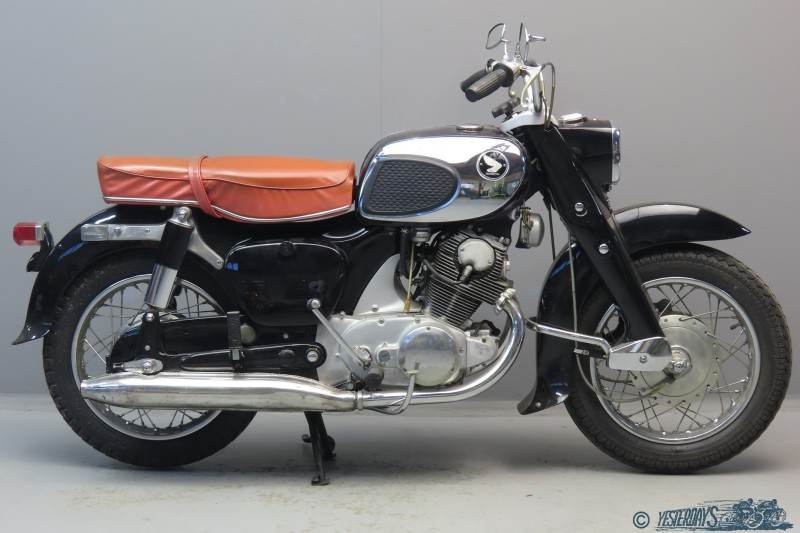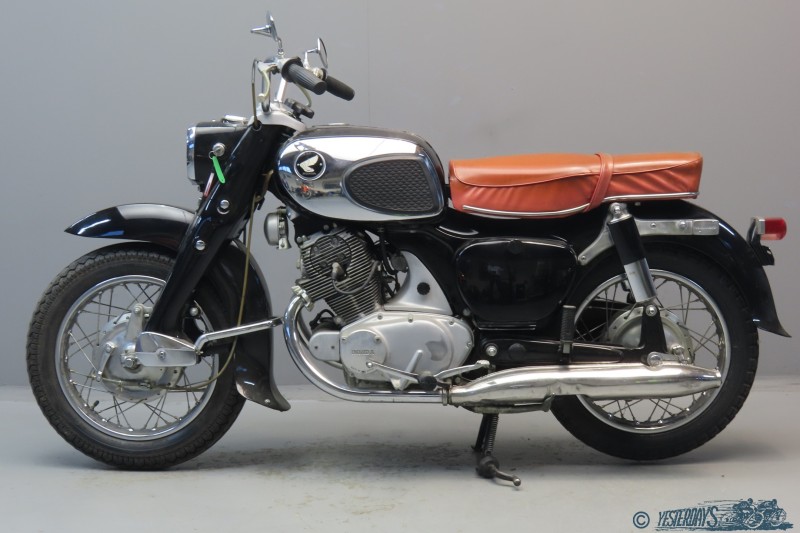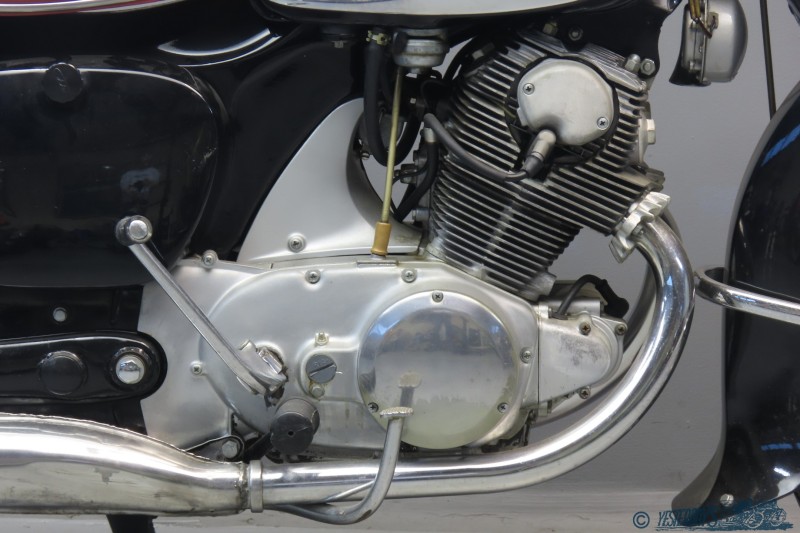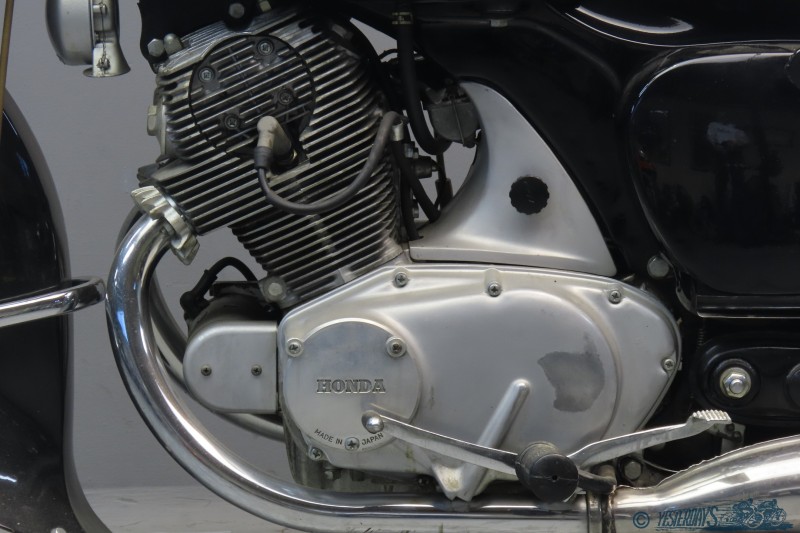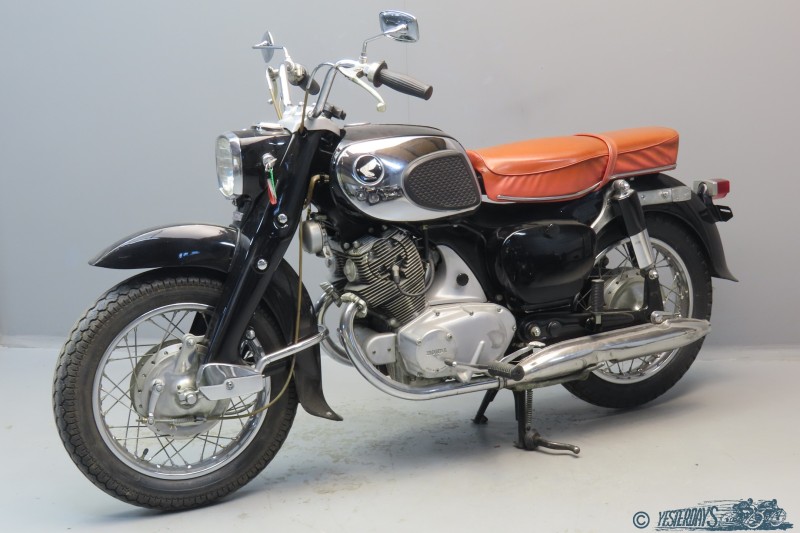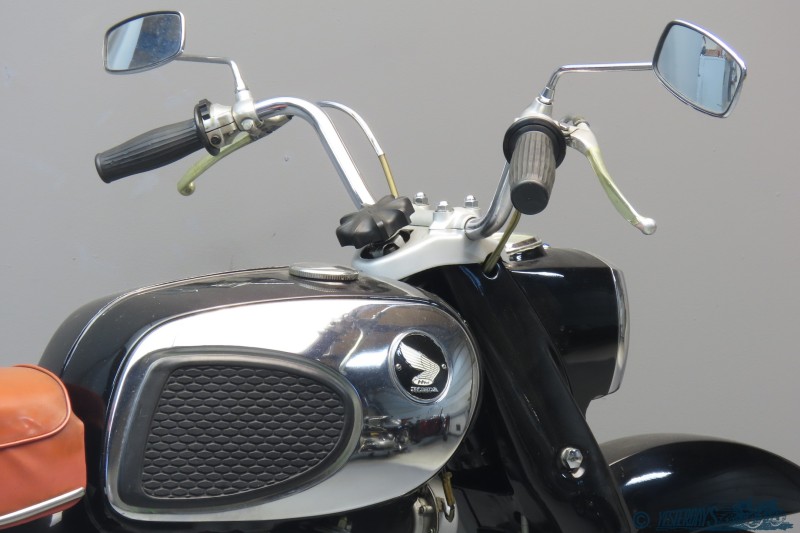Description
Honda 1969 CA78 “Dream” 305 cc OHC twin frame # CA78-1036181 engine # CA77E-1036233
Soichiro Honda will go down in history as the man who truly changed the face of motorcycling forever. Honda founded his enterprise in 1947, using war-surplus Tohatsu generator motors clipped to bicycles. After his supply of engines dried up, he designed his own 50cc two-stroke clip-on motor, the first Honda Cub. Sales boomed, but Honda wanted more, and in 1954 he made the unheard-of plan of visiting Europe and learning as much as he could, directly from the best motorcycle factories in the world. He met with Triumph’s Edward Turner, who was impressed by Honda, but could not see beyond his own legendary ego that the man before him would, within 15 years, come to ruin his home industry!
The twin ”Dream” series were produced under various model codes from 1960 till 1969. They were the first larger-capacity motorcycles that Honda mass-exported. They were very well equipped with 12 volt electrics, electric starters and other advanced features that were not common to most other motorcycles in the sixties. Moreover, they were well-engineered, dependable and very economical with fuel. Later versions of the Dream were equipped with a 305 cc engine that had an output of 23 hp @7,500 rpm. The high-rise handlebars were specifically used on the American market. Honda characterised the Dream is a brochure like this: “Here’s the street machine for the man who isn’t going to be happy with less than the best. The powerful 23 hp motorcycle is so easy to ride you won’t dare to tell about it. Because everything is designed and engineered so perfectly, rider and machine are almost a single living entity. And it’s studded with the abundance of safety features and extras the Honda rider expects. Speed up to your work and enjoy life more with a Honda.”
The machine we offer is a road-registered older restoration in running condition. This CA78 Dream model possesses an unmistakable style of its own and is now one of the most desirable of the early Japanese classics.

